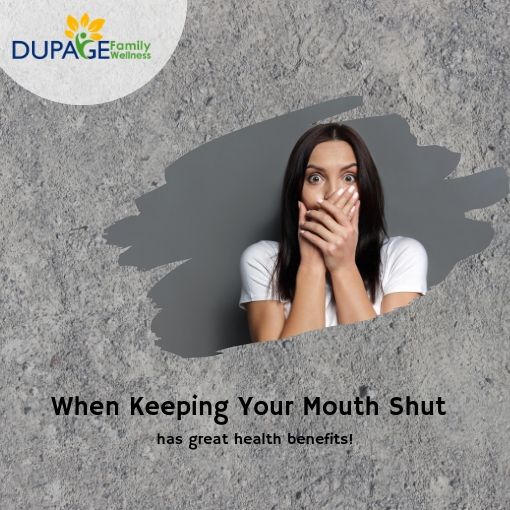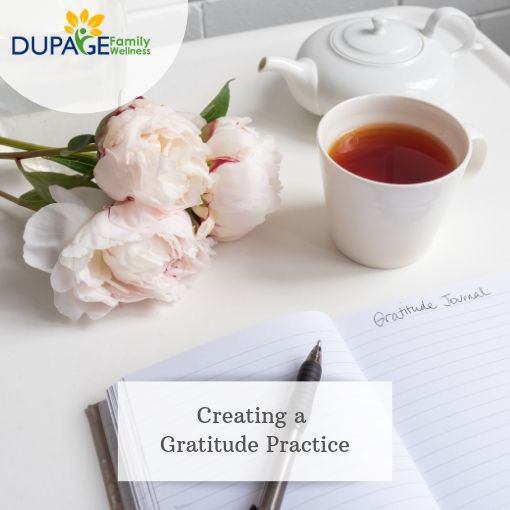 There is one situation where most experts agree it is best to keep your mouth shut. No, it's not when you have a strong opinion or disagree with a friend. It's simply when you are breathing!
There is one situation where most experts agree it is best to keep your mouth shut. No, it's not when you have a strong opinion or disagree with a friend. It's simply when you are breathing!
We all know that we need oxygen to survive, but does it really matter if we get that oxygen breathing through our mouth or nose? According to many experts, it does.
Let’s look at the claim that nose breathing is the best way to get your oxygen and explore ways to get the most out of your breath!
Why Nose Breathing Is Best
Science has found many benefits of nose breathing over mouth breathing that most people are not aware of, including:
- Filtering - the cilia in our nose acts as a filter, purifying the air of particles. Further down the respiratory tract, the mucus lined windpipe continues to trap particles before they get to our lungs.
- Regulating - the nasal passages regulate the humidity and temperature of the air we breathe.
- Absorbing Oxygen - the paranasal sinuses produce nitric oxide, a gas that can increase your lungs ability to absorb oxygen by 10-25%.
- Immune Response - nitric oxide also has anti-fungal, anti-viral, anti-parasitic, and anti-bacterial properties.
Read more ...
 Omega 3 and Omega 6 are essential fatty acids that the body can not make on its own. Omega 3 is thought to have many health benefits, while omega 6 is known to cause inflammation.
Omega 3 and Omega 6 are essential fatty acids that the body can not make on its own. Omega 3 is thought to have many health benefits, while omega 6 is known to cause inflammation.
It is very important for your health to have the right balance of these acids. People who are deficient in omega 3 may notice dry patches or bumps on their skin, brittle hair, dandruff, or nails that break easily. Inadequate levels can also negatively affect concentration, mood, energy, and sleep.
While it is possible to achieve this through diet, many professionals recommend getting a good quality supplement. Let’s take a look at the dietary impact of fatty acids and the benefits of getting the balance right to discover if a supplement could be a good choice for you!
Historically
Research suggests that our hunter-gatherer ancestors consumed around a 1:1 ratio of omega-6 and omega-3 fats. It also indicates that these hunter-gatherers did not struggle with many of the inflammatory diseases that our culture does (heart disease, cancer, diabetes, etc.).
Modern culture’s push for convenience foods, as well as the food industry’s attempt to lower cost has had a significant impact on these ratios. Today, the average ratio of omega 6 and omega 3 is between 10:1 and 20:1, with some individuals as high as 25:1.
If you eat out or consume processed foods it is likely that you are exceeding the amount of omega 6 that your body can handle!
Read more ...
 Last week’s blog looked at the benefits of creating a gratitude practice and explored many ideas for starting one. While some of you were ready to jump into a gratitude practice, the very thought of gratitude may have made others of you want to scream!
Last week’s blog looked at the benefits of creating a gratitude practice and explored many ideas for starting one. While some of you were ready to jump into a gratitude practice, the very thought of gratitude may have made others of you want to scream!
Gratitude & Denial Are Not the Same Thing
Thinking about gratefulness doesn’t seem to make sense when you are hurting. That’s okay! If life has been difficult recently, you may be struggling with all kinds of painful emotions. There is a reason you feel the way you do, and pushing these difficult emotions aside is not our goal.
In fact, denying our difficult emotions can actually have a negative effect on our mental, emotional, and physical well-being. It is important to allow yourself to lean into these painful emotions and accept them without judgement.
Leaning into difficult emotions and not avoiding them can actually open you up to a whole new experience. According to Brene Brown, “mindfully practicing authenticity during our most soul-searching struggles is how we invite grace, joy, and gratitude into our lives.”
Since we know that putting on a happy face and forcing gratefulness will not help us in the long run, let’s explore how to lean into gratefulness while honoring the hard aspects of our lives!
Read more ...
 Would you be interested in a simple practice that research has found to be beneficial for your physical, psychological, and social well-being? What if I told you this practice was free, did not take much time, and could be done in the privacy of your own home?
Would you be interested in a simple practice that research has found to be beneficial for your physical, psychological, and social well-being? What if I told you this practice was free, did not take much time, and could be done in the privacy of your own home?
Some of you may have already guessed that we are talking about creating a Gratitude Practice. A Gratitude Practice is different than having an "attitude of gratitude" or "looking on the bright side of things."
Let's explore the benefits of this practice and how to start one, but first let's talk about why many people cringe at the thought of gratitude!
Why Many People Don't Like Gratitude Practices
With study after study showing the impact that gratitude has on both physical and emotional well-being, implementing a gratitude practice could be in our best interest. While practicing gratitude has many benefits, at times it can feel like we are just being asked to “look on the bright side”.
In truth, gratitude must be held in tension with the reality of life. It is crucial to lean into moments of both gratefulness and suffering.
Read more ...
 A recent survey found that 74 percent of mothers are already looking forward to their kids going back to school less than a month into the summer break. While these moms love their kids, the summer can be an overwhelming time, making the school bus a welcome sight. But going back to school can also be stressful for parents!
A recent survey found that 74 percent of mothers are already looking forward to their kids going back to school less than a month into the summer break. While these moms love their kids, the summer can be an overwhelming time, making the school bus a welcome sight. But going back to school can also be stressful for parents!
It’s a lot of work to make sure that the kids have everything they need to start the year off right. The links below are some resources that can help your family during this exciting, but often stressful time of year.
A Proper Fitting Backpack
Boosting Your Child’s Immune System
Healthy School Lunches
Ordering School Supplies
- Target's School List Assist - Get all your kid's school supplies without any hassle. Simply choose if you want your items delivered to your home or picked up at the store, enter the child’s class information (school and grade), and the supply list will be put in your online shopping cart. (You can remove any items you already have.)
I hope this is a great year for you and your family!
Dr. Jamie
 There is one situation where most experts agree it is best to keep your mouth shut. No, it's not when you have a strong opinion or disagree with a friend. It's simply when you are breathing!
There is one situation where most experts agree it is best to keep your mouth shut. No, it's not when you have a strong opinion or disagree with a friend. It's simply when you are breathing!

 Omega 3 and Omega 6 are essential fatty acids that the body can not make on its own. Omega 3 is thought to have
Omega 3 and Omega 6 are essential fatty acids that the body can not make on its own. Omega 3 is thought to have  Last week’s
Last week’s  Would you be interested in a simple practice that research has found to be beneficial for your physical, psychological, and social well-being? What if I told you this practice was free, did not take much time, and could be done in the privacy of your own home?
Would you be interested in a simple practice that research has found to be beneficial for your physical, psychological, and social well-being? What if I told you this practice was free, did not take much time, and could be done in the privacy of your own home? A recent survey found that 74 percent of mothers are already looking forward to their kids going back to school less than a month into the summer break. While these moms love their kids, the summer can be an overwhelming time, making the school bus a welcome sight. But going back to school can also be stressful for parents!
A recent survey found that 74 percent of mothers are already looking forward to their kids going back to school less than a month into the summer break. While these moms love their kids, the summer can be an overwhelming time, making the school bus a welcome sight. But going back to school can also be stressful for parents! 